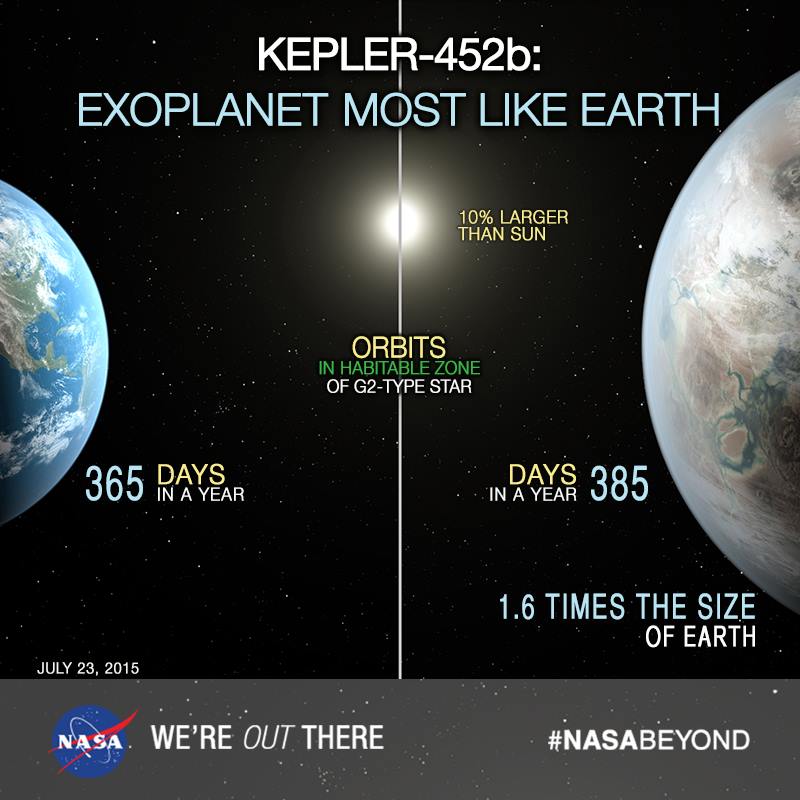
Scientists are finding more and more alien worlds that may be capable of supporting Earth-like life, but none of these exoplanets so far are carbon copies of our home world. The new exciting find involves K2-18 b, often referred to as"Earth's Cousin" a planet about 110 light-years from Earth that NASA's Kepler space telescope discovered in 2015. K2-18 b lies in its parent star's "habitable zone," the range of distances that could support the existence of liquid water on a world's surface. Two teams of scientists announced this week that they've found water vapor in this world's air — a big milestone in the search for alien life.
"This is the only planet right now with the correct temperature [for Earth-like life] and water outside the solar system," Angelos Tsiaras of University College London's Centre for Space Exochemistry Data (CSED), the leader of one of the research teams, told reporters during a teleconference Tuesday (Sept. 10). Tsiarasand his colleagues published their results today (Sept. 11) in the journal Nature Astronomy. The other research team, led by Björn Benneke of the Université de Montréal, posted its paperon the online preprint site arXiv.org Tuesday. The study by Benneke et al. has not yet been peer-reviewed.
Tsiaras and his colleagues stressed that K2-18 b is far from an Earth twin. The exoplanet is eight times more massive than our world, making it a "super-Earth," a type of world that's common throughout the Milky Way galaxy but is not represented in our own solar system.
Then, there's the matter of K2-18 b's star, a red dwarf much smaller and cooler than the sun. Because red dwarfs are so dim, their habitable zones reside much closer in; K2-18 b completes one orbit every 33 Earth days. The alien planet may therefore be "tidally locked" to its star, always showing the red dwarf the same face, just as Earth's moon only ever shows its near side to us. But this would not be a dealbreaker for the existence of life.
"A tidally locked planet can also be habitable," said Ingo Waldmann of CSED, a member of Tsiaras' team. Modeling studies suggest that "the energy from the dayside can be quite equally distributed to the nightside," Waldmann added.
Tidally locked or not, such a world would be decidedly unlike Earth. Indeed, K2-18 b doesn't even boast Earth-like conditions, Tsiaras said. (The red-dwarf host star bathes K2-18 b in much higher levels of ultraviolet radiation than Earth receives from its sun, for example.)
"It is definitely not a second Earth," he said.


Planet Kepler 452b is around 1.6 times larger than Earth in diameter.
Kepler 452b Orbit
Kepler 452b revolves around its host star at a distance of around 98 million miles (158 million km) and takes 385 days to make one complete orbit.
Kepler 452b Atmosphere
At the moment the presence of any atmosphere or its composition are unknown, if Kepler 452b is indeed a rocky planet then it is possible that it could have had a similar atmosphere to that of Earth in the past, now though its atmosphere may be undergoing a runaway greenhouse effect.
But that shouldn't turn astrobiologists, or anyone else interested in the prospect of life beyond Earth, off to K2-18 b. After all, it's entirely possible — perhaps even likely, given the incredible diversity of alien worlds — that life has taken root on many different types of planets (and, perhaps, moons) throughout the galaxy. "The only question that we're trying to ask here, and we're pushing forward, is the question of habitability," Tsiaras said. "This is the planet that satisfies more [habitability] requirements than any other that we know right now."

No comments:
Post a Comment